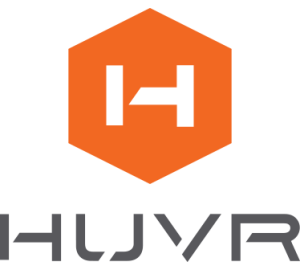Blog · 5 MIN READ
Operationalizing Robotic Inspection Technology
Posted on June 09
Technology Defines Us
Human beings love technology. Beyond our highly developed cerebral cortex, it pretty much defines us as a species. The internet recently became fascinated with some polling that suggests a significant group of people think they can beat a grizzly bear in a fight (spoilers: you can’t). Why do they think this? Tools; technology. Given tools and enough time, we can pretty much do anything—that’s the premise of the A-Team.
The Essence of Operationalizing
However, all the cool technology in the world doesn’t matter if we can’t use it for something practical. Something that gets results. Assuming the technology does what it says it will (and that can be a big assumption), the practical needs of a plant haven’t changed: production. If your cool new tech isn’t assisting safety or production, it’s just an expensive toy. The concept of leveraging technology to extract maximum value is called “operationalizing.” When you have a repeatable, standardized, optimized and distributed program that harnesses new technology, you’ve operationalized it.
Technology vs. The Point of Diminishing Returns
Let’s leave the plant and head home for a moment. We have, at our fingertips, a vast array of products that can transform most domiciles into a “smart home.” We can automate or remotely control our lights, temperature, electronics, doors and locks. We can peek at what’s going on outside via wireless cameras, or what’s happening inside when we’re away with the same. Robots will vacuum our floors!
The thing is, all these innovations come with an app to control them. And if you ONLY have smart light bulbs, that’s not a big deal. But as you add systems, the complexity quickly reaches a point of diminishing returns, and it’s easier to just get up and flip the switch. This is where our friends at Apple, Google and Amazon come in: when you can just ask Siri to dim the lights or turn up the heat, you’ve got a smooth process that doesn’t take more energy to activate than it saves. Since they are vendor agnostic, they can act as a central control for everything. You’ve operationalized your smart home.
Safe Factory = Smart Home
Moving back to the realm of industry, the best selling point for robotics is safety. A robot can go places that are difficult or impossible for a human to reach, like very high in the air, in a very confined space, underwater or next to something very hot or cold. You can also combine these conditions—for instance, inside a vessel with fumes that would be harmful to a person even with a respirator. Their cameras can take hundreds of pictures because time is not a huge factor. They can see more than our eyes because they have access to multiple interchangeable optics or other sophisticated measuring devices. So while bringing multiple devices into your smart home makes it “smart,” we like to see bringing robotic inspection tools into your plant as making it a “safe” factory.
The Problem of Data Overload
However, the problems of the smart home translate to the safe factory. As you add devices, you add inputs to your workflow. Since most companies are on a hybrid internal/third-party inspection plan, you’ll have third-party vendors accessing your data, even if it’s write-only; worse, they might just drop off a hard drive to add to the box under your desk, making finding something in a hurry impossible and making your IT department very, very sad. If you can’t find the data you need, it doesn’t exist; and when you think about the massive amount of data that robots are creating, the need to organize becomes paramount. With a great deal of data in multiple formats coming from multiple sources, the problem becomes: is the value of the technology at a point of diminishing returns? How do you take all this information and convert it into actionable insights?
Operationalization: Converting Data to Actionable Insights
Just like with the smart house, the answer is a vendor agnostic platform—in this case, one that can ingest data from multiple sources and in any format, organize it and deliver what the user needs to make informed decisions: actionable insights. But what would this platform look like?
Ideal Platform for Data Management
It needs to be flexible enough to be useful for any inspection workflow; established or new. It needs to take data and return analysis that informs decisions. It needs to securely contain all your data in a single, secure repository (helping get rid of those boxes of hard drives) that makes your IT department happy. It needs to effortlessly scale from a single asset to an entire site to your entire company. It needs to be efficient enough to save your team time that can be spent on more inspections or other value-add activities. It needs to be a single point for all your data to flow into.
HUVR: The Future of Robotic Inspection Technology
The platform needs to enable you to fully leverage the potential added value of robotic inspections in a way that is:
- organized
- analyzed
- reportable
- searchable
- actionable.
In a word, it needs to operationalize.
Or, in another word, it needs to be HUVR.
HUVR delivers the industry’s first Reliability Automation Platform providing automation, AI and a visual way of managing asset integrity. Our simple to use, purpose-built platform transforms the way data is collected, managed and monetized.


